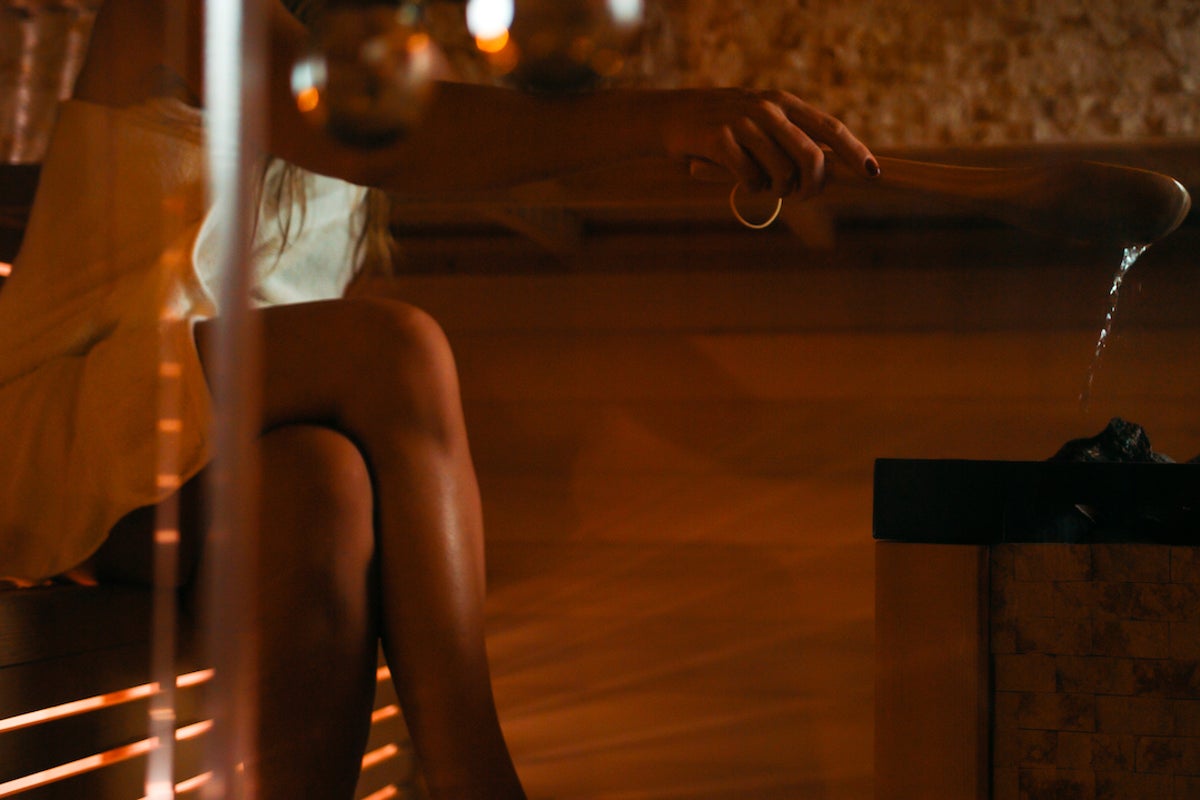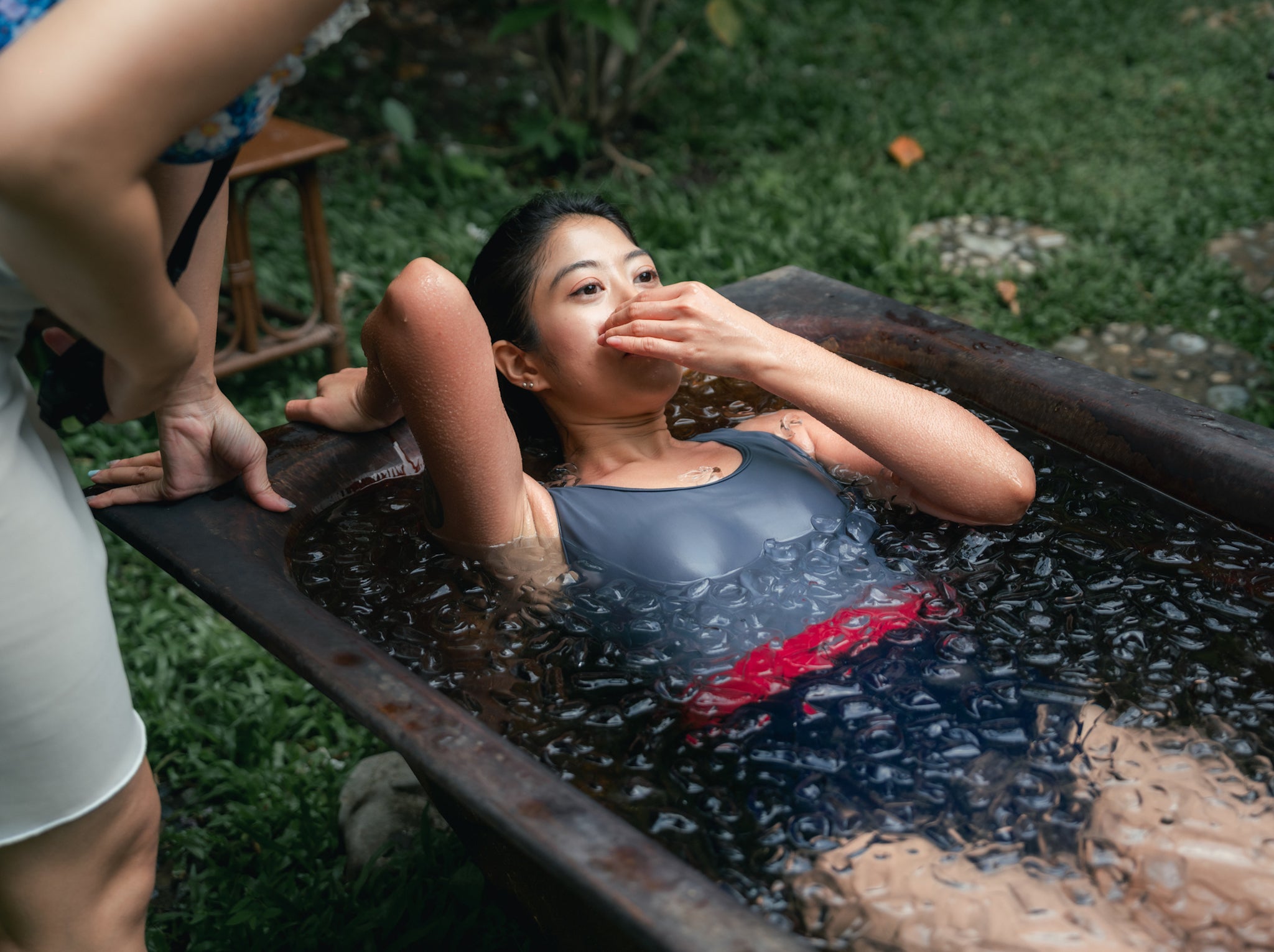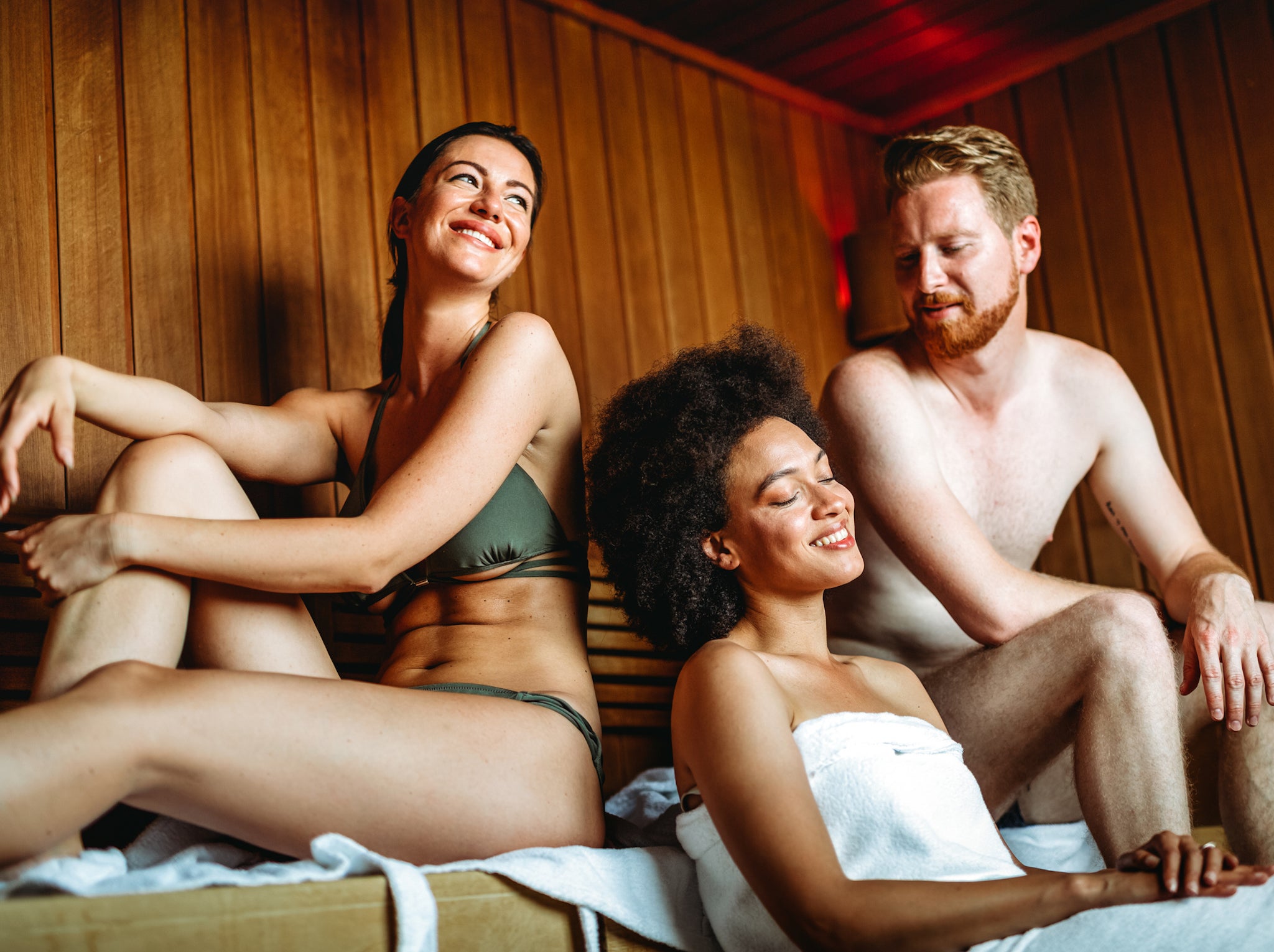
Contrast therapy – the practice of alternating between the heat of a sauna and cold exposure from an ice bath – is a practice that’s been used by athletes for health and recovery for years. However, the somewhat gruelling experience has recently become a mainstream wellness tool, a viral social media moment and the centre of the UK’s health-forward social scene. There are specialist clubs and upscale biohacking clinics dedicated to the practice and plenty of high street gyms now offer specialist sauna and ice bath spaces.
Heat therapy alone has long been studied for its benefits – from muscle recovery and cognitive improvement to better cardiovascular conditioning – and experts agree that the heat can be good for your health. Saunas have a long history of social value across several continents and in the last few years, sauna culture has well and truly exploded in the UK. Then you have the ice bath devotees – a contingent dedicated to mind over matter and who preach the benefits of cold water exposure. But the sauna and ice bath crowds have largely stayed separate, until now.
Wellness evangelists love it and many rave about it as a tool for social enrichment and a unique alternative to the pub, as well as a non-negotiable health protocol with the powder to reduce biological age. But does contrast therapy actually work wonders and, more importantly, is it safe for everyone?
What is contrast therapy?
Typically, contrast therapy means a few rounds of moving between a sauna and cold water. Heating the body, then rapidly cooling it. The “contrast” refers to the heat. Variations on this include hot and cold water, cryochambers and cold-water swimming.
“The shift between hot and cold causes vascular constriction and dilation, which stimulates blood flow, supports detoxification, reduces inflammation (leading to better delivery and removal of inflammatory components and the toxins generated), and may accelerate muscle recovery and tissue healing. Many people also report improved mood and reduced soreness,” says longevity expert Dr Harpal Bains.
Dr Bains explains that the specific combination of heat and cold creates what’s known as hormetic stress: “the good kind of stress that encourages the body to adapt. It has been linked to resilience, reduced inflammation and enhanced lymphatic drainage”. This goes some way to explaining why after a relaxing session in the sauna, a person might willingly plunge into a 6 degree bath of water.
Research published in the European Journal of Preventive Cardiology found that alternating heat and cold therapy can reduce blood pressure, enhance blood vessel elasticity, and support overall heart health. The combination of heat and cold was found to mimic moderate exercise by increasing heart rate and promote circulation.
Another 2022 study concluded that cold-water immersion, especially when paired with sauna, can significantly reduce muscle soreness and improve recovery time after strength, power and endurance exercises. Although new data has shown that it might be worth waiting an hour after exercise before subjecting your body to cold exposure if you want to retain muscle mass.
The specifics are important when it comes to contrast therapy and experts recommend very specific protocols. This is to protect the body from experiencing too much stress and to ensure the safety of participants. Professional athletes might know what their body can withstand, but for a first timer, the intensity of moving from a sauna to an ice bath can be dangerous.
Biohacking enthusiasts will often recommend starting with heat and finishing with cold, whether you’re doing one round, or several. This is because the heat improves circulation and the cold helps to reduce swelling and inflammation that may have been exacerbated by the heat. Starting with heat can help prepare muscles and tissues for the cold.
Protocols might vary slightly depending on where you do them and who your guide is too. After a sauna, which could be infrared or traditional, the cold element might be a cold shower, a cool plunge pool or an ice bath with temperatures ranging from 6-16 degrees.
The time spent in each state is also important: 20 minutes in the sauna, followed by one to three minutes in an ice bath is usually the sweet spot, according to contrast therapy expert and thermalist instructor Jane Witt. However, she explains, this might vary from person to person, along with the specific temperature and repetitions.

Is contrast therapy safe for everyone?
Despite the buzz around it, contrast therapy isn’t universally beneficial. And while cold immersion might look thrilling, for some it can be too much, too fast. My personal experiences with moving from heat to cold have been mixed. I love cryotherapy and will happily spend minutes in a sub-zero cryo chamber in a swimsuit, but a cold plunge below eight degrees sets my teeth on edge and tends to send my body into a stress state that’s very hard to come down from. For this reason, I tend to swerve an ice bath. I can handle a cool shower after a stint in a sauna but that’s my limit when it comes to cold water.
“While it can be powerful, contrast therapy isn’t for everyone. Some individuals find it overstimulating – particularly the cold element – and may experience anxiety, dizziness or spikes in cortisol, which could counteract the calming or recovery effects,” warns Dr Bains. “While most people can tolerate it, it’s not advised for those with certain heart conditions, Raynaud’s, or low blood pressure unless medically supervised.”
Cold and heat are tools, not trophies, and every person’s body will react differently so pushing yourself through in the name of self development is often counterintuitive to the nature of these processes as health protocols. There’s also the fact that men and women can respond differently to both cold and heat and that many studies have primarily used male subjects as a benchmark for testing the effects of both heat and cold. The female body, with its cyclical hormonal shifts, isn’t always considered, and the effects can be dramatic.
Read more: Are ice baths actually good for women? Experts explain the effects
“Thermoregulatory differences between men and women are mainly due to differences in body dimensions. Typically, women are smaller than men, and therefore often rely more on skin vasodilation and less on sweating compared to men. So, they have a different thermoregulation but individuality is very important to consider for everyone, independent of sex,” explains Puck Alkemade, sports scientist and physiologist at body temperature sensor company Core.
Alkemade notes that menstrual cycles and contraceptive use may influence heat sensitivity, but that research is still emerging. “The same training or intervention does not elicit the same response in everyone and individualisation optimises performance,” she says.
Lauren Scott Dovey, founder of Heat Healer, which sells wellness tech, found that for her, extreme contrast therapy proved more triggering than transformational. She turned to contrast therapy to manage health conditions but soon found it didn’t work for her.
“It has become a go-to wellness ritual for everything from anxiety to recovery. But what’s often overlooked is that there is limited evidence around how contrast therapy impacts women, particularly those dealing with hormone-sensitive conditions like PCOS,” she says.
“At first, I loved the post-plunge high. The immediate clarity and buzz felt incredible. But within hours, I would feel anxious, swollen, overstimulated and completely thrown off. My cortisol would spike, and my hormones would spiral. For those of us with stress-sensitive systems, extreme cold can often trigger more inflammation, not less. These days, my regular routine is a 20 to 30 minute infrared session followed by a cool shower. That kind of contrast is just enough to help me feel rebalanced, without pushing my system into overdrive.”

Should you try it at home?
Contrast therapy doesn’t need to take place in a luxury gym or high-tech recovery clinic. But if you’re DIY-ing it, there are a few rules of engagement.
“Most healthy individuals can tolerate basic contrast protocols at home such as alternating hot and cold showers, but full immersion should be approached with care. If you’re new to it, start short, go slow and stay mindful of how your body responds. If possible, ensure that there’s another person close by at home that you can count on,” says Dr Bains.
Contrast therapy isn’t meant to be an endurance test. Witt explains that, “cold exposure elicits a number of physiological responses in the body. Regular and short exposures to cold water immersion (where you are aiming to micro-stress the body) provide powerful stimulus and the body reacts as if in danger.” So this is worth bearing in mind when you’re starting out.
Witt adds that one can learn to cope with the cold and reap the benefits, through controlled breathing and gradual exposure. What’s important to remember is that the benefits and results can vary from person to person.
Dr Bains agrees, noting that “breathwork helps regulate the body’s stress response during cold exposure. While not mandatory, it can make cold immersion more manageable by calming the nervous system and reducing the ‘shock’ effect. In fact, this is something most people do automatically when immersed in cold water.”
She adds: “Contrast therapy is a powerful tool but it’s not a competition, something to be mindful of especially if attempting this with a group of people. The real gains come from consistency, nervous system adaptation and listening to your own stress threshold. What works well for one person might be too much for another.”
Your fitness level, stress threshold, hormones, and even your body composition all play a role in how well you tolerate contrast therapy and whether you experience the health benefits. As Alkemade notes: “Genetics may play a role in how one tolerates heat. The body can be trained to withstand hotter and colder temperatures, but all of these changes need to happen gradually over the course of a few weeks.”
There is no one-size-fits-all. But with awareness, moderation, and an eye on the data, this can be a powerful ritual. Whether it’s an infrared session and a cool rinse, or a social soak-and-plunge at a bathhouse, the future of contrast therapy should be less about extremes and more about balance.
Read more: How to spot the symptoms of burnout and treat them, according to wellbeing experts
Your organs have their own age – and it may predict health risks better than your birthday
Why social media influencers telling us not to wear sunscreen are dangerously wrong
The 2025 wellness trends you need to know about, according to experts
All the benefits of infrared saunas, from improved circulation to better sleep
The best wellness festivals in the UK this summer
The truth behind ex-vegan influencers selling organ meat supplements







